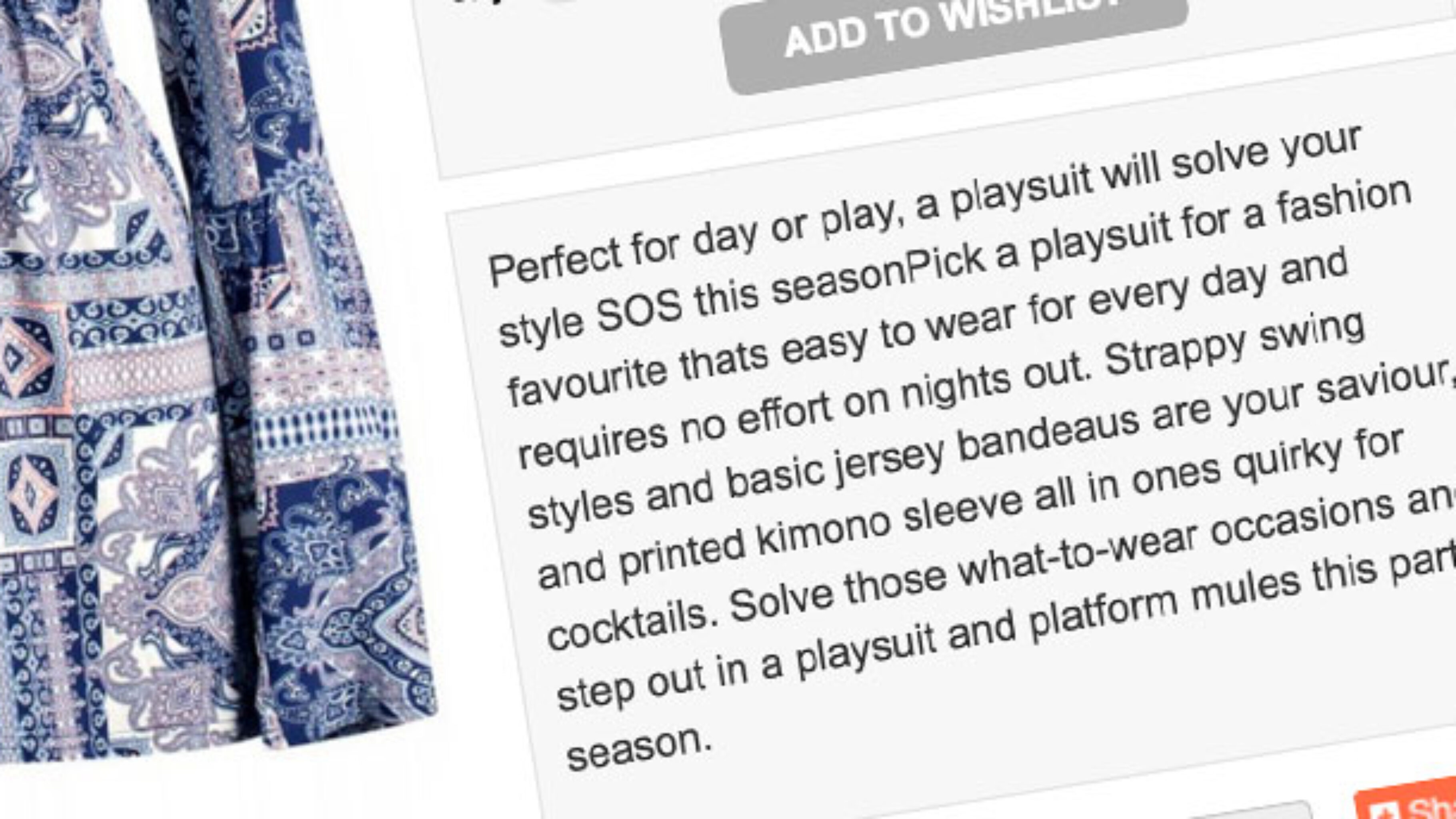The self proclaimed eCommerce experts in their ivory towers, have long since argued that product descriptions are necessary, both for SEO reasons and in order to engage the customer and push sales. However, with the whole eCommerce industry being as image driven as it is, do we really need lengthy or even succinct product reviews? Let’s take a look.
When done badly, product reviews almost certainly devalue your product and your website. This may sound obvious, any content that is badly written makes a bad impression, but the whole subjectivity of content makes it tricky to administer. The creator has no control over how the reader interprets the onsite content. As an eCommerce site owner, you can create product descriptions which you are convinced will put forward your products most exciting attributes and inform the consumer of everything they need to know about an item to carry out an informed purchase decision, however you never really know how the information is absorbed and understood. Functional descriptions are pretty safe, but style advice and usage scenarios are open to interpretation.
The biggest standout argument against the use of product descriptions, is the fact that many of the major high-street retailers have long since shunned them. The big players use little more than a couple of words in relation to their products on their product pages. eCommerce product pages are focused massively on up-sales, so copy next to particular items usually suggest other similar garments that can be worn with the product. Descriptions on the likes of Zara and H&Ms websites are as straight forward and to the point as possible. They simply describe the products appearance and materials in no more than a sentence. There is no excessive, flowery sales pitch in the mix.
Some would argue that from an SEO point of view, product descriptions are essential for eCommerce success. This is not the case these days. Keywords just don’t hold as much value in Google’s opinion anymore. Page titles and descriptions still need to be comprised of keywords for search reasons, but what SEO now prioritises is site speed, ease of use and whether or not a site is mobile optimised. In an image driven industry, users simply want to browse clear, attractive pictures and then choose whether to not to select them and send them to the checkout.
Text is distracting and messy. Users don’t have time to focus on whole paragraphs, that’s why bullet points and scarcity of volume is becoming ever more popular in eCommerce content writing. When users favour fresh images over excessive copy, all evidence points to descriptive elongated copy being a waste of time and effort. A time saving approach is automation of product descriptions, which can turn CSVs of product specs into prose. This is an approach that’s becoming much more popular.
With all things considered, product descriptions should not be dismissed altogether, they just should no longer be given the same attention as attractive imagery, layout testing and UX innovation.
With the pace of eCommerce shopping becoming ever faster, short sharp content is more pertinent than ever. Long-winded text kills conversions and sky rockets drop off rates. Yes, include descriptions so your consumers know what they are buying and feel confident in their purchases, but keep it short. Copy should only be lengthy in the case of high-end purchases such as cars and houses, where it is vital that the consumer gleans as much detail from the site as possible, but in the fast paced world of fashion, copy should be second to style.








